Author: Matt Del Fiacco
If there is just one rule about the human race, it’s that we’ll figure out a way to make alcohol one way or another. Fermented beverages take many shapes and forms, the modern examples of which only represent a small sample of what has been available throughout history. That said, I rarely find myself surprised by something someone is making. Any degree of experimentation, even with odd concoctions like cereal beer, seems somewhat natural in the modern landscape. That is, unless we are talking about Skeeter Pee.
The development of Skeeter Pee is attributed to an adventurous winemaker from Minnesota named Lon DePoppe who, thirsty for something unique, came up with what is essentially fermented lemonade. Thanks to a rather generous dose of table sugar, Skeeter Pee typically clocks in with a high level of alcohol while purportedly maintaining its easy-drinking, palate pleasing appeal.
I first heard of Skeeter Pee a few years ago while browsing a homebrew forum and initially figured it was an experiment to see how cheap one could get away with making booze. As someone who generally doesn’t like sweet drinks, I wasn’t interested in the premise and never tried it out. But when Jersey & Tim had mostly positive remarks about a Skeeter Pee submitted by a listener of The Brülosophy Podcast, my interest was piqued and I decided I’d make a batch to see for myself.
| Making Sparkling Skeeter Pee |
Being entirely new to this process, I relied on the recipe found at the dedicated Skeeter Pee website. That’s right, this stuff actually has its own website, on which is the following description of Skeeter Pee:
The original, inexpensive, quick, easy to make, easy to drink, naturally fermented, lemon, hot-weather, thirst quencher.
Other than some very minor changes based on what I had on-hand, I basically stuck to the recipe as it is presented.
Sparkling Skeeter Pee
Recipe Details
| Batch Size | Boil Time | IBU | SRM | Est. OG | Est. FG | ABV |
|---|---|---|---|---|---|---|
| 5 gal | 60 min | 0.0 IBUs | 1.7 SRM | 1.083 | 0.981 | 13.6 % |
| Actuals | 1.062 | 0.991 | 9.4 % | |||
Fermentables
| Name | Amount | % |
|---|---|---|
| Table Sugar | 7 lbs | 44.95 |
| Table Sugar for Back-Sweetening | 2.312 lbs | 14.85 |
| Lemon Juice - 3 x 32 oz Bottles | 6.259 lbs | 40.2 |
Miscs
| Name | Amount | min | Type | |
|---|---|---|---|---|
| Yeast Energizer | 2.00 tsp | 0 min | Primary | Other |
| Wine Tannin | 0.75 tsp | 0 min | Primary | Other |
| Yeast Nutrient | 6.00 tsp | 3 days | Primary | Other |
| Potassium Sorbate | 2.50 tsp | 0 min | Secondary | Other |
| Potassium Metabisulfite | 0.50 tsp | 0 min | Secondary | Other |
| Super-Kleer KC Finings | 1.00 Items | 3 days | Secondary | Fining |
Yeast
| Name | Lab | Attenuation | Temperature |
|---|---|---|---|
| Lalvin EC-1118 (EC-1118) | Lallemand - Lalvin | 75% | 45°F - 95°F |
Download
| Download this recipe's BeerXML file |
PROCESS
After gathering all of the ingredients for my inaugural batch of Skeeter Pee, I was ready to “brew.”
I started by adding a seemingly unreasonable 16 cups table sugar and 1/3 cup lemon juice to 2 liters of water.
This solution was heated over medium heat to just below boiling and held there for 30 minutes, allowing the sugar to fully dissolve.
During this time, I added two 32 oz/946 mL bottles of lemon juice and 4 gallons/15 liters of RO water to a sanitized carboy.
When the super sugary solution was was done on the heat, I dissolved the Fermaid-K and tanninc powder in a small sample, swirling to fully incorporate.
This mixture was added back to the super sweet solution, which was then poured into the carboy along with the rest of the RO water.
A hydrometer measurement showed the lemony-sweet liquid was at 1.062 OG, a touch lower than expected, but nothing I was worried about.
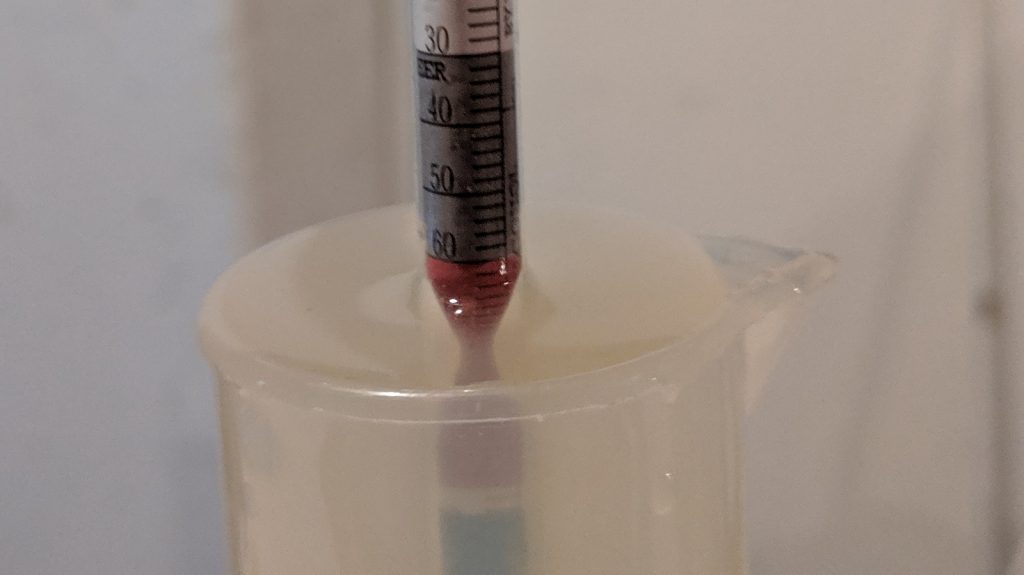
I placed the filled carboy in my basement, which maintains a fairly consistent 62°F/17°C throughout the year, and it sit for 48 hours with foil over the opening to allow any preservatives from the lemon juice to off-gas. Next, I re-hydrated two packs of Lalvin EC-1118 wine yeast in water with some Go-Ferm nutrient for 15 minutes before pitching.
I then used a degassing wand to introduce oxygen into the solution.
After four days of fermentation, I took a hydrometer measurement to check on how things were progressing.
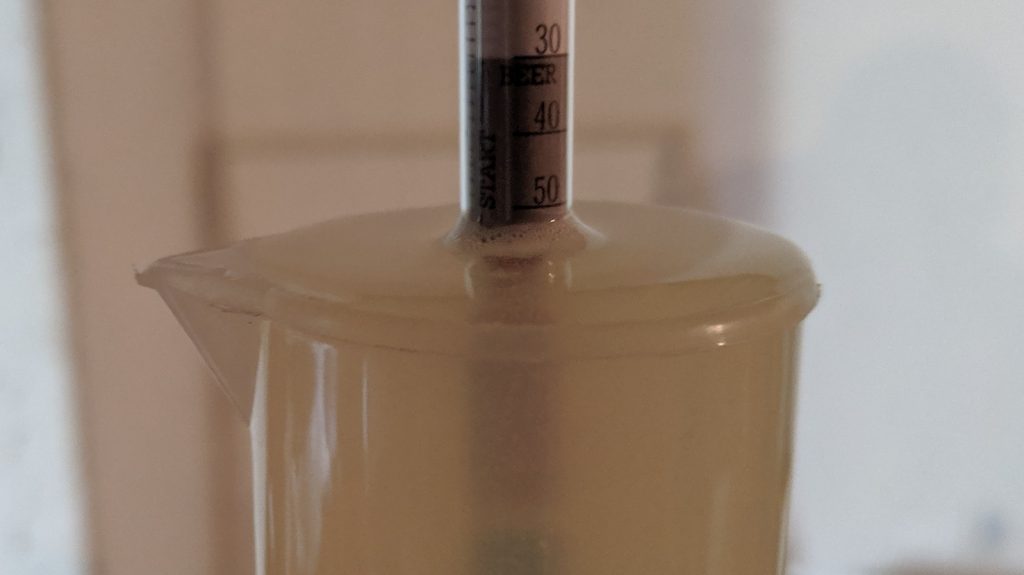
Per the instructions, I added additional yeast nutrient as well as another bottle of lemon juice to the fermenting batch before degassing again.
After three more days, I racked the Skeeter Pee off the yeast to a new carboy.
I let the Skeeter Pee sit for a month before returning for another hydrometer measurement, which showed it dropped to 0.991 FG for a total ABV of 9.4%.
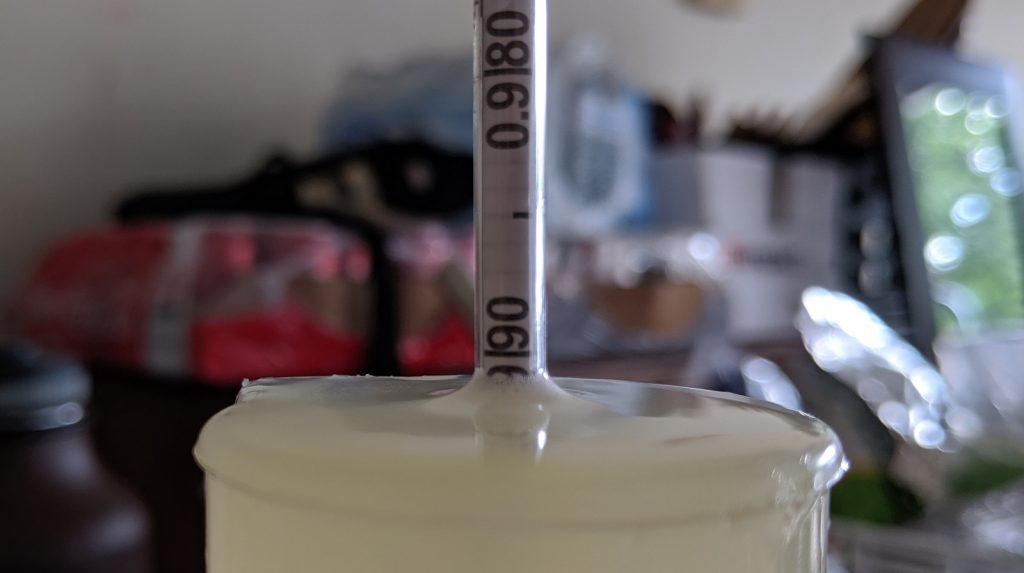
Next, I dissolved the potassium metabisulfite and potassium sorbate in a small sample of Skeeter Pee before adding it to an empty carboy.
I then racked the Skeeter Pee into this new carboy and added a pack of Super-Kleer to encourage rapid clarification.
After a week, the Skeeter Pee was crystal clear.
I proceeded with the back-sweetening step by dissolving 6 cups of table sugar in a small amount of boiling RO water, adding it to an empty keg, then racking the Skeeter Pee onto the solution to thoroughly incorporate.
Wanting a sparkling quaffer, I hit the keg of Skeeter Pee with 40 psi of CO2 overnight before reducing the gas to serving pressure and letting it condition. After a couple weeks, it was clear, carbonated, and ready to serve!
| IMPRESSIONS |
Throughout the process of making this batch of Skeeter Pee, I’ll admit I felt closer to a bootlegger than a homebrewer. The high alcohol percentage from heavy use of table sugar seemed odd to me, but I have to say I am pleasantly surprised with how the drink turned out. This is in direct contradiction to my wife’s experience, who noted, “It tastes like gross lemonade.” While I may not agree that it’s gross, I’m right there with her in thinking it is incredibly, perhaps unsurprisingly, similar in flavor to lemonade.
My experience of this Skeeter Pee largely aligned with descriptions I read prior to making it, namely that it was tart and maintained a surprising amount of lemon character. Despite the massive amount of sugar used for back-sweetening, the beverage was not too sweet, to the point those interested in mimicking commercial hard lemonades would likely require quite a bit more sugar. I also perceived some wine-like qualities in this Skeeter Pee, which others I shared it with agreed was rather pleasant. The body was exceptionally thin when sampled still, and while the carbonation helped, I would prefer a bit more in this department.
Overall, I was quite happy with how my Skeeter Pee turned out and can understand why some turn to it during the warm summer months. I’d be interested to explore making different fruit additions and messing around with varying levels of sweetness, as I think such adjustments could really add to the drinking experience. Then again, it’s pretty good on its own, and while I can’t say for certain when I’ll make my next batch of Skeeter Pee, I was pleasantly surprised by how enjoyable it was!
If you have thoughts about this recipe or experience making something similar, please feel free to share in the comments section below!
Support Brülosophy In Style!
All designs are available in various colors and sizes on Amazon!
Follow Brülosophy on:
FACEBOOK | TWITTER | INSTAGRAM
If you enjoy this stuff and feel compelled to support Brulosophy.com, please check out the Support page for details on how you can very easily do so. Thanks!


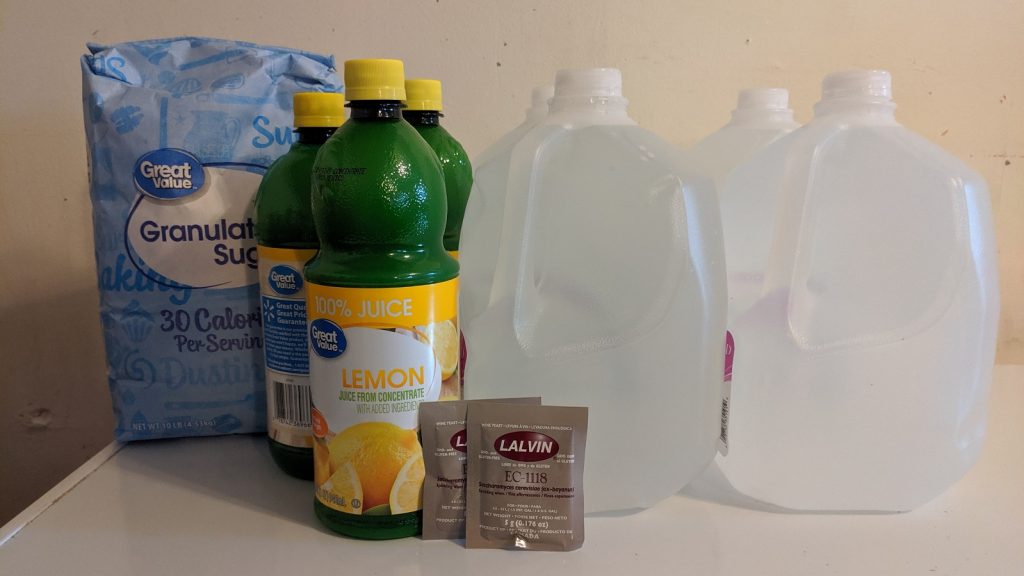
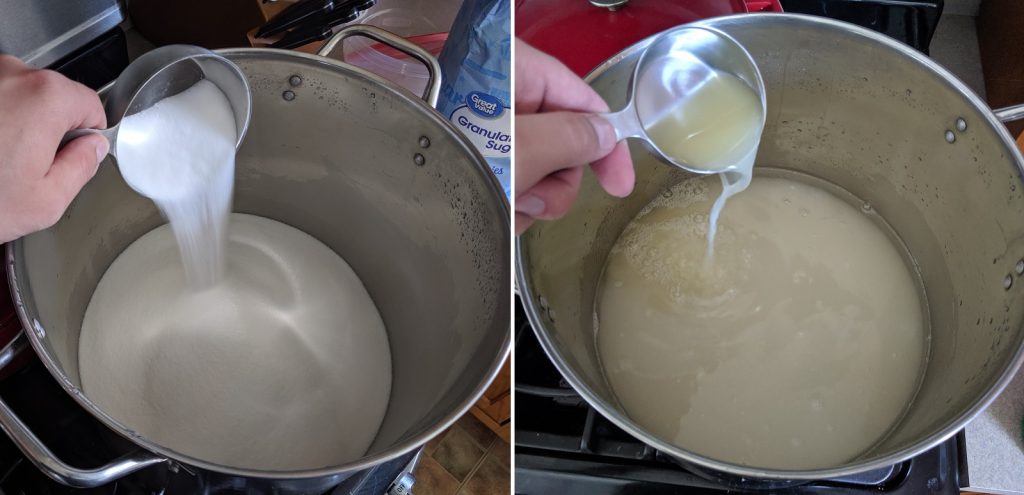
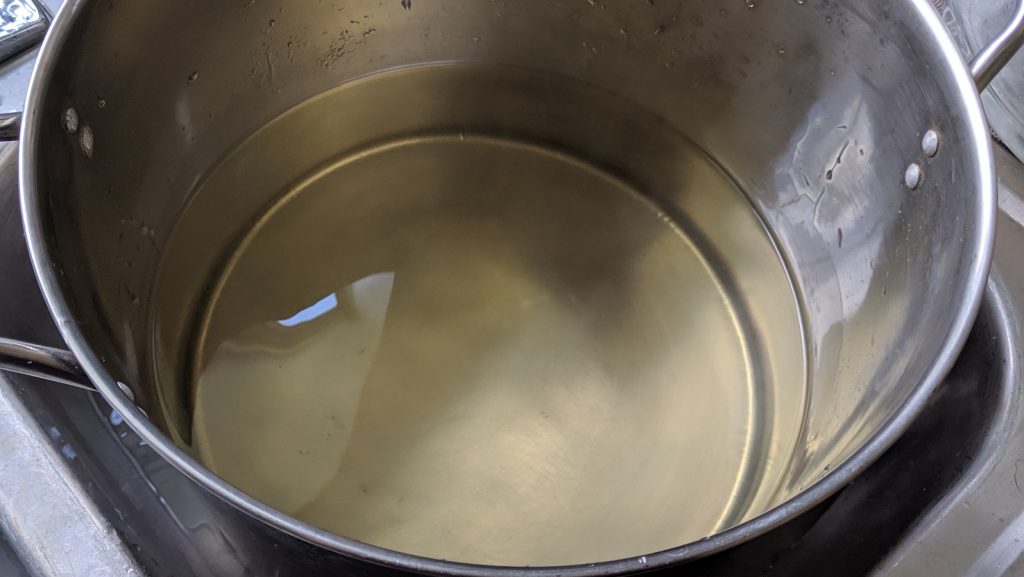
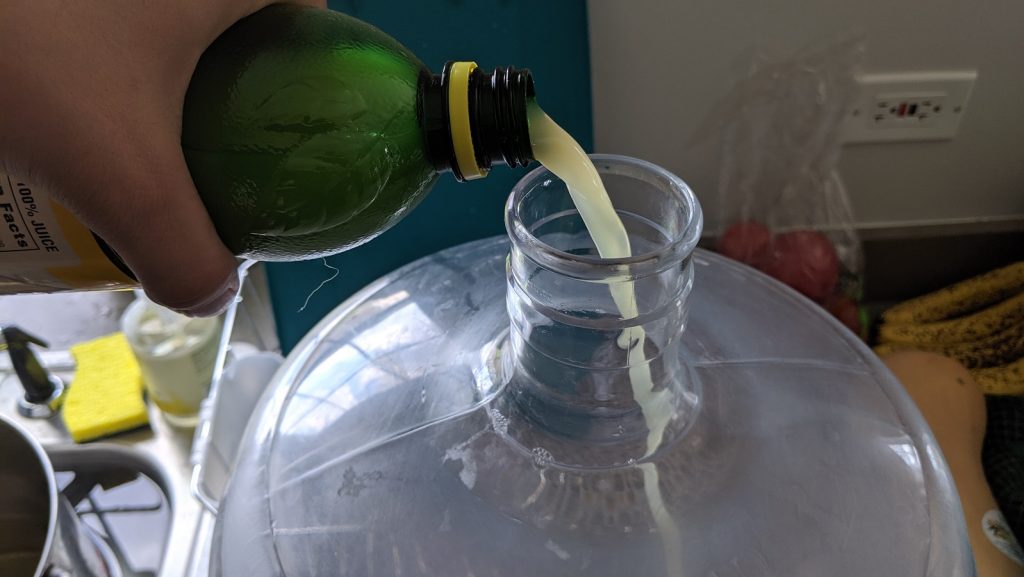
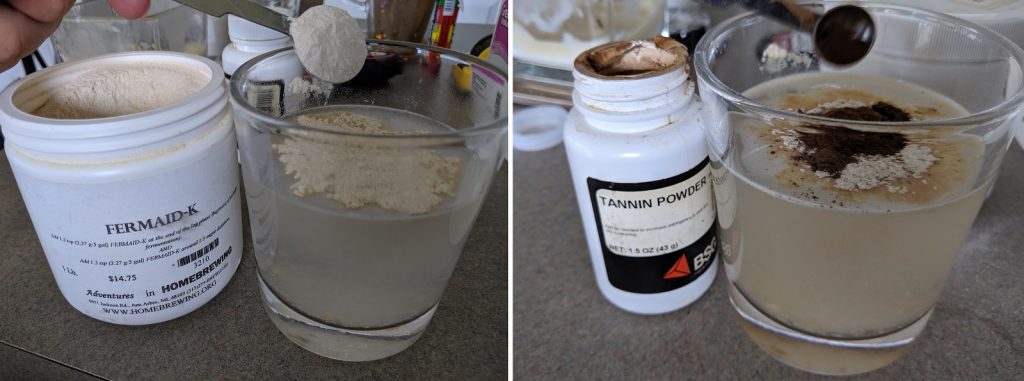
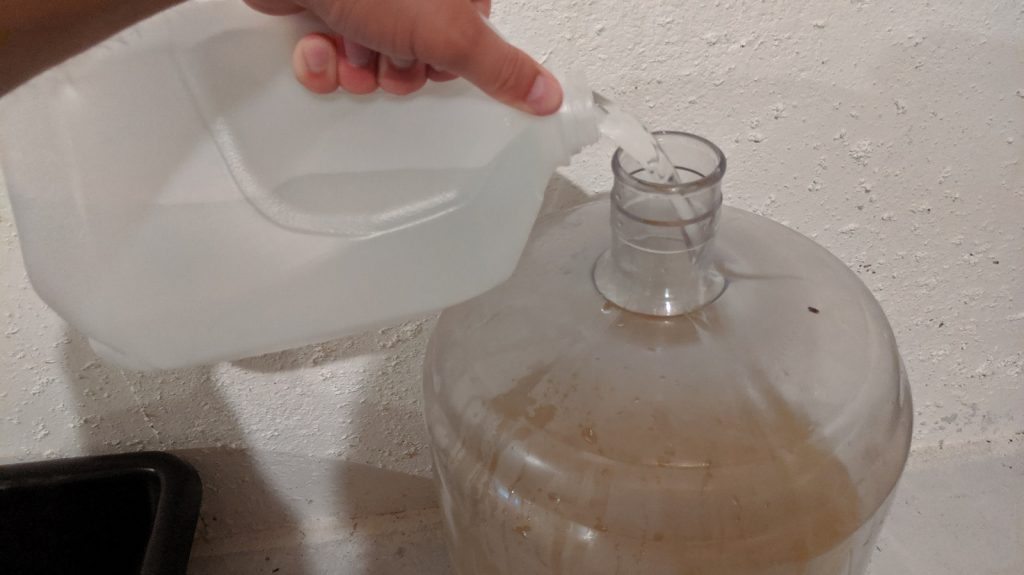
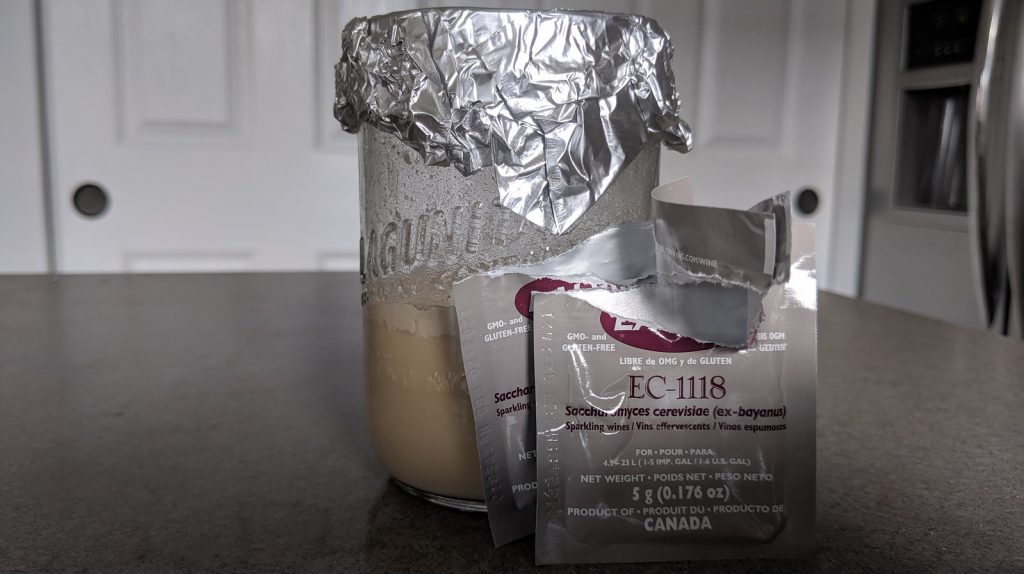
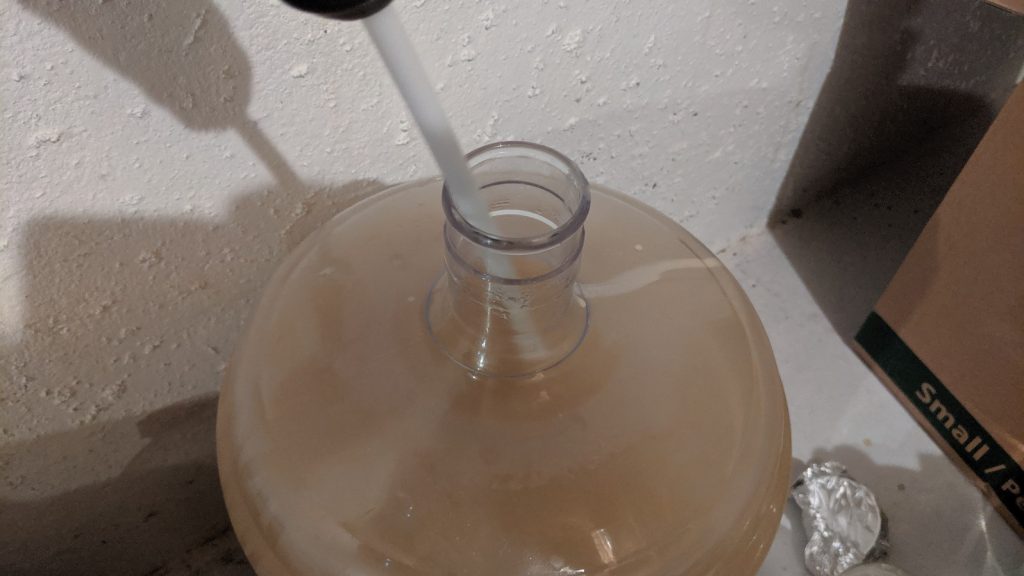
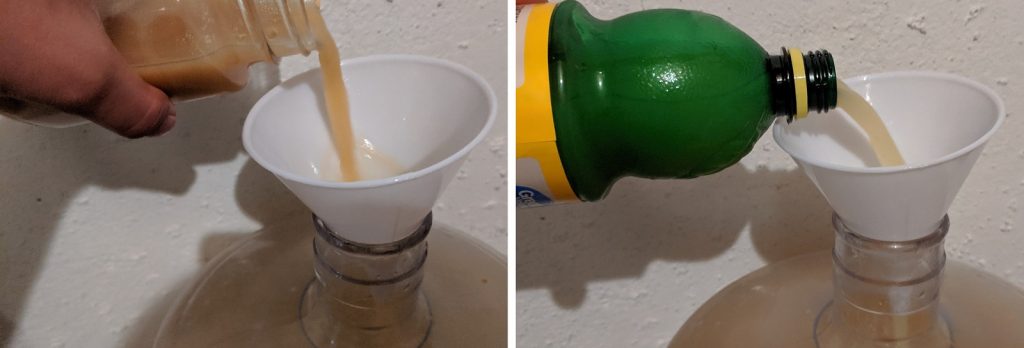
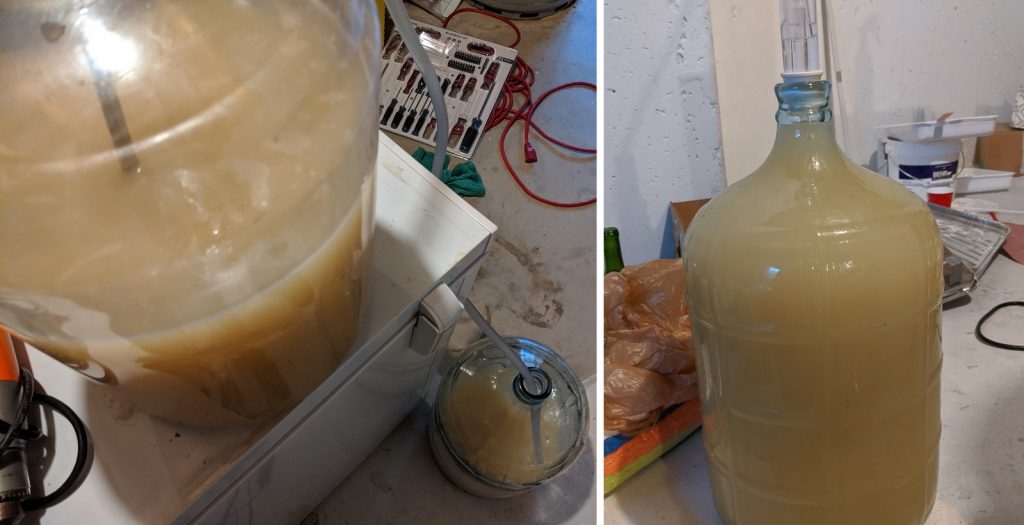
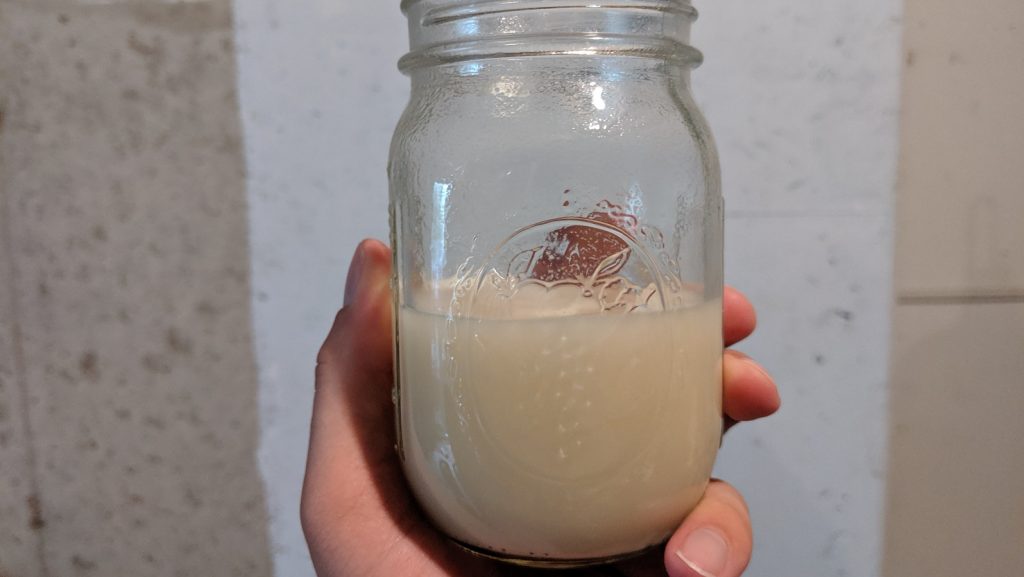
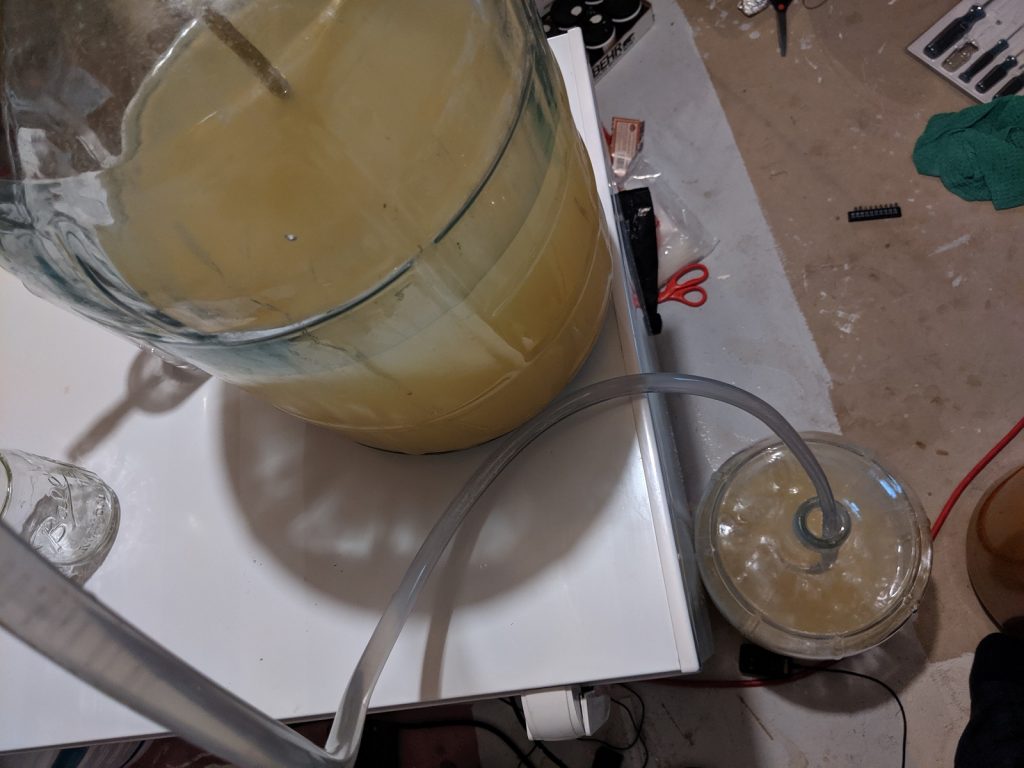
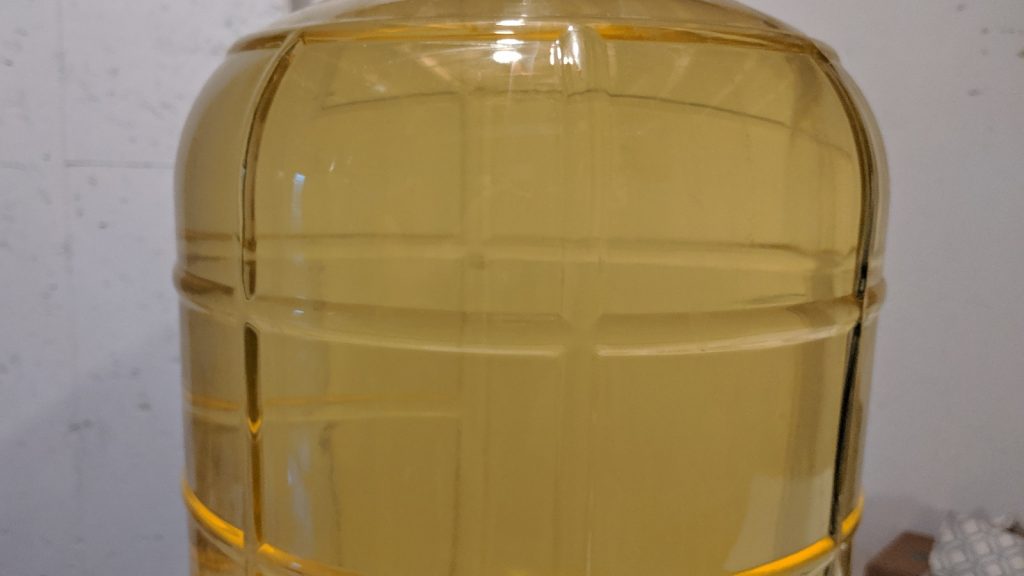
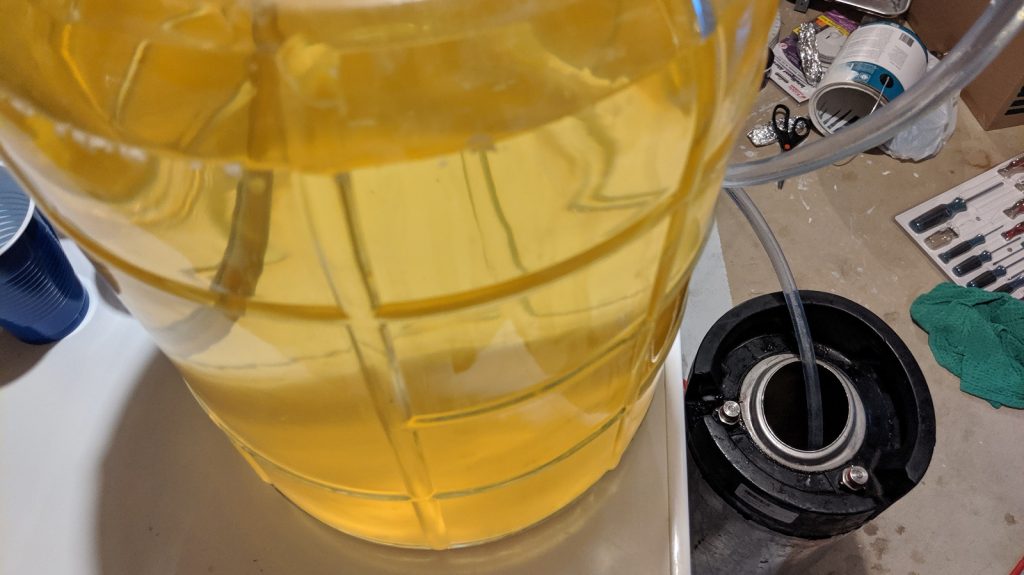
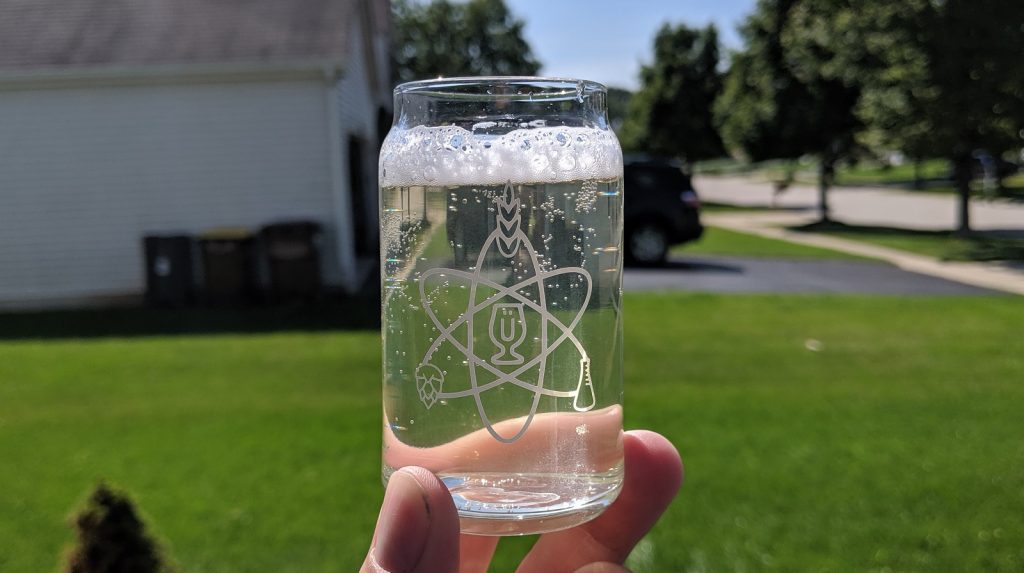











16 thoughts on “Brü It Yourself | Sparkling Skeeter Pee”
A hot weather thirst quencher at 9,4% ABV??? 😀 😀
For hot weather, I think skeeter pee would be much better somewhere between 5-7%. 10% ABV on a hot weather day would knock me on my ass!
I wonder what the magical kveik yeast would do with this “sparkle drank”. Yeast comparison: Can tasters tell the difference between Skeeter Pee fermented with wine yeast vs kveik yeast. Inquiring minds want to know, lol. Interesting read!
This is pretty similar to homebrew recipes for hard sparkling water.
Thanks for sharing this! I’ve tried similar experiments myself over the years. In particular, I once brewed a batch of “hard Tang” that was a bit underwhelming. In particular, I picked up a noticible banana ester using Lalvin 71B. I’m glad to see that you had success – this will make for a good starting point if I decide to try something similar in the future.
How did it go from yellow in the carboy to clear in the glass? I’ve made basically the identical recipe many time and I’ve never gotten it anywhere close to clear.
newbie question, if you were to bottle this would you need to pasteurize? or just skip the back sweetening?
No, the potassium sorbate and metabisulphite will prevent the back-sweeting from fermenting, but if you bottle it, it will be still, and not sparkling.
I make it with 2/3 lemon, 1/3 lime, and a gallon on cherry juice. I only back-sweeten half as much. The lemon doesn’t present, and I get a great sparkling cherry limeade.
I’ve made it as is as well as a half sugar version and several fruit versions. They all came out great! Fresh or frozen fruit isn’t even needed, wine fruit purées work great to backsweeten and add fruit flavor without the extra mess.
You’re an insane person. And I love it! Bwahaha.
With summer coming to an end I think this will take a backseat until next year for me, but I would be interested in maybe making a smaller batch of this and combining it with a beer for a shandy/radler
This is I’ve done a few times now, with both blonde ale and kolsch. But you really have to blend to taste, or the beer gets lost.
Good to know, I brewed what I was hoping would be a lemon “kolsch” and tried to get the lemon flavor just from Lemondrop hops. That didn’t really pan out.
I accidentally added 3 bottles of lemon juice at the start. It’s still fermenting well but should I add a 4th or leave as is?
I like dry hopping mine. 1.5oz of whatever you got around(I’ve done cascade once and citra anither time) for 2 days. It enhances the overall aroma which also adds a layer to the taste.